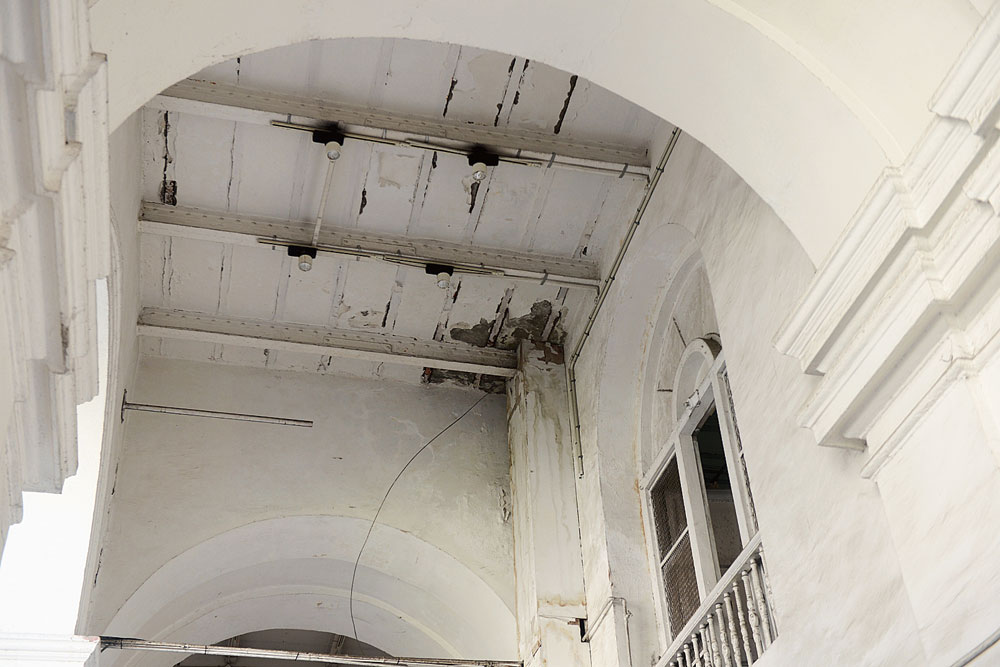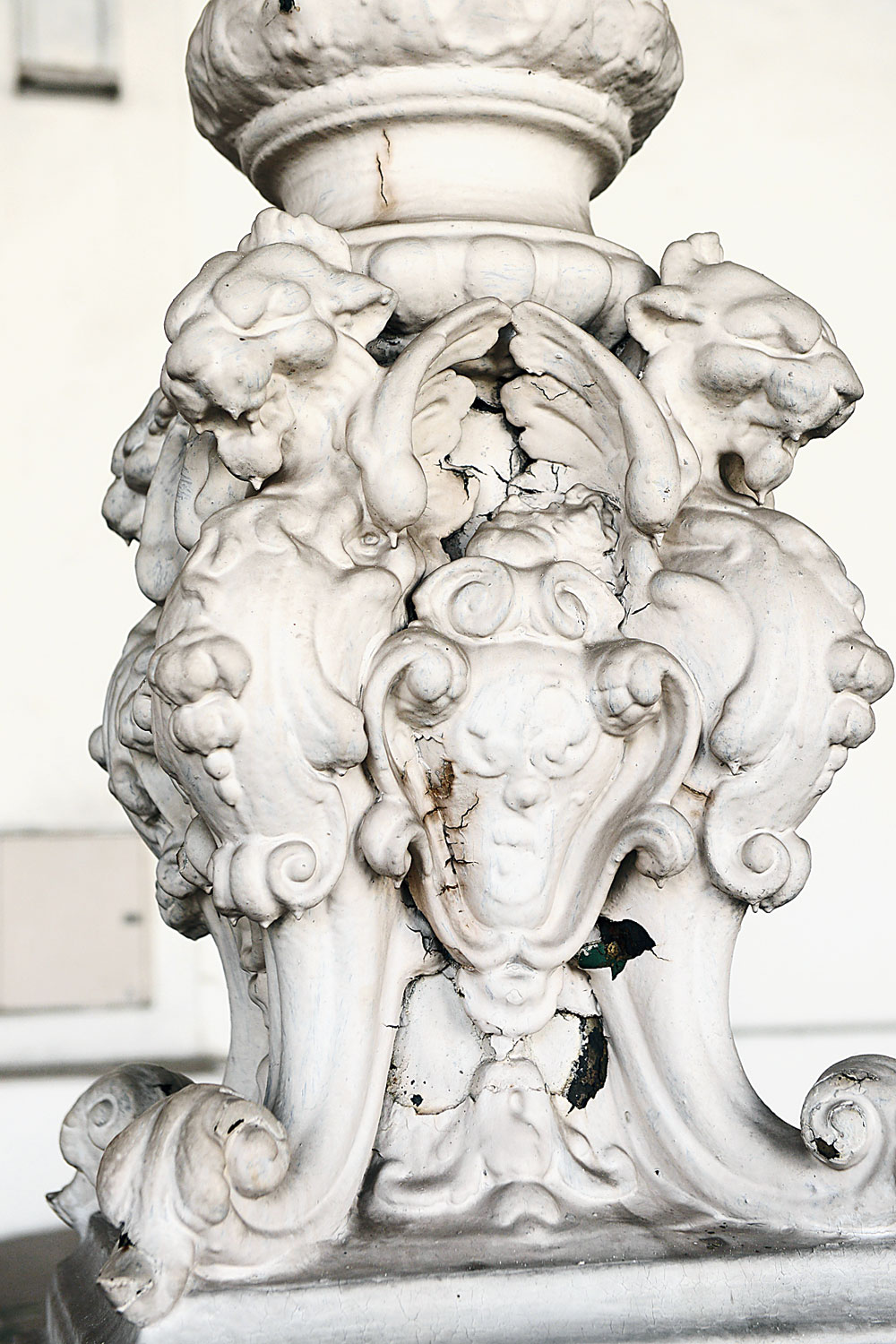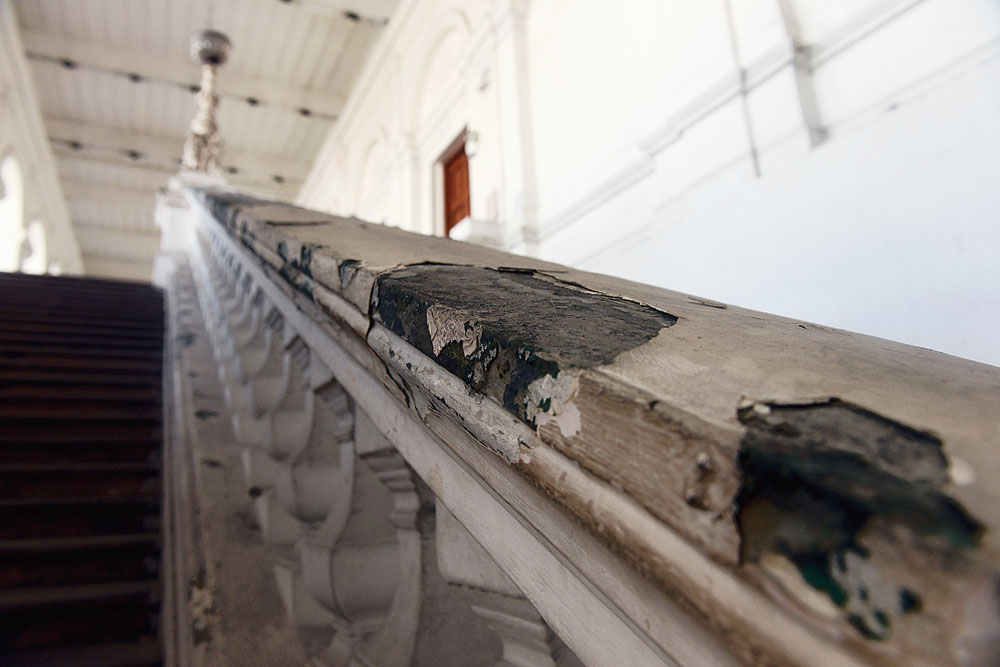The 144-year-old Indian Museum building that underwent a Rs 200-crore modernisation and restoration between 2013 and 2015 already has chunks of its walls and corners breaking off, water dripping from the roof, vegetation sprouting from nooks and lime plaster coming off.
Architects say the condition of the JL Nehru Road edifice suggests a shoddy restoration job — done by NBCC, a government undertaking — and points at the failure to have a maintenance regimen that a building of this stature and vintage deserves.
A ride down the Park Street flyover reveals the extent of damage to the façade of neoclassical building of 1875 vintage, which was designed by Walter Granville. (The museum started its journey in 1814 at Asiatic Society and was shifted to its current address in 1878).
Outside, capitals of pilasters are broken, peeling plaster have bared old bricks and pipes spout water during rain. Inside, the Italianate palace around a colonnaded courtyard tells another story of neglect — a net of cobwebs hangs from lofty ceilings, the white paint on plywood boxes set up to camouflage wirings is peeling off and plaster on the colonnaded ceiling is crumbling now and then, putting employees and visitors at risk.
The grand staircase on the left leading to the first floor has puddles caused by water leaking through the roof during rain. Paint and plaster from the balustrade are peeling at several places and the intricately carved lamp holders at the head of the staircase have developed cracks.
Architect Abin Choudhury, who has years of experience in working on public buildings and museums and has collaborated with international architects Herzog and de Meuron, was aghast at the condition of the museum building.
“It doesn’t seem that it has been repaired in the recent past. It looks as if there has been no maintenance or renovation for a long time. Water is leaking from the roof of such a grand staircase... corridors and cornices are in a bad condition. The fire hose reel on the first floor is empty and broken and the condition of external and internal walls are deplorable. The entry foyer near the ticket counter is really ugly,” he said during a brief tour of the building.
Choudhury feels a public building like the museum should serve as the best example of design, hygiene, cleanliness and safety.

Paint and plaster have come off the ceiling inside the museum. Damp patches are visible on the walls Picture by Bishwarup Dutta

Paint has peeled off and cracks have appeared in the ornamental lamp holders at the head of the grand staircase of the museum Picture by Bishwarup Dutta
“None of this has been taken care of,” he said.
An official of NBCC, the public sector unit that had undertaken the restoration and modernisation project on the occasion of the bicentenary of the museum, said: “We completed our work in February 2014. One year after that was ‘defect liability period’, during which we rectified anything that went wrong for free. We maintained the building and did all repairs as and when required during that period.”
The official said of the total money alloted for the project, only around Rs 40 crore was spent on repairs.
“We had told the authorities that the building required preventive and regular maintenance by a professional company. The then joint secretary in the ministry of culture had admitted that professional maintenance was a prerequisite to keep such an old building in shape. Five years have passed, there has been no professional maintenance,” he said.

Paint and plaster have peeled off the railing of a staircase Picture by Bishwarup Dutta
The plaster, he said, is coming off mainly because of vegetation. “This happens because birds fly into the open verandahs. Their droppings contain seeds and saplings germinate and take root in the plaster. This causes the plaster to crack and disintegrate. One has to regularly check and extract these plants and repair all cracks and crevices,” he said.
Also, being at the heart of the city does not help. “The sulphur from vehicular emission causes the most damage,” said museum director Rajesh Purohit, who took over in July 2017.
He said he was seeking funds from the culture ministry for another round of repairs.
Going forward, architect Choudhury feels the government should call a tender for renovation through a proper agency.
“The best people in the world should intervene, otherwise the benchmark of public buildings in India will always be lower than mediocrity,” he said.

Plaster has come off the wall just beyond the archaeological section. Picture by Bishwarup Dutta











